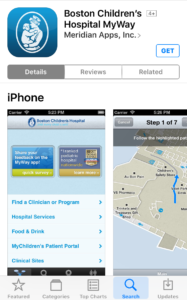“What can you do now that you couldn’t do before?”
That’s a question from my friend and patron Eric Bonabeau that I’ve raised before with regard to the IoT, and it’s a worthwhile counter-weight to focusing on the steady increases in operating efficiency that incremental IoT strategies can bring about (a not-t0o-subtle plug for the webinar that I’ll do on that subject May 2nd with low-code hotshots Mendix. Register now!). Sure, concentrate your efforts on squeezing every bit of precision you can, but don’t forget that the IoT can also really change everything.
I’m reminded of that by this piece by Kevin Ashton, who coined the “Internet of Things” name when he was working on early RFID projects at MIT. He writes about a brilliant insight by Prof. Shwetak Patel, a MacArthur Fellow at the University Washington. He’s a polymath whose IoT creations include Zensi a residential energy monitoring device a low-power wireless sensor platform company called SNUPI Technologies, and WallyHome, a consumer home sensing product.
Patel was studying COPD (once called emphysema) which causes shortness of breath and coughing. 5% of the world population suffers from it, and 3 million die from COPD yearly. In the US alone it causes 3/4 million hospitalizations and is the 3rd largest cause of death.
To diagnose it, doctors use spirometers, which cost thousands of dollars, to measure air flow in and out of lungs. Most COPD sufferers don’t have access to them. Hmm. What could substitute for the spirometers? Patel realized there were actually billions of devices that could do the job: the microphones in everyone’s phones! His research group created an algorithm that calculates lung health by analyzing the sound of a person blowing into the mic. The patient just calls a toll-free number and blows into the phone. Computers analyze the data and tell the patient the results within seconds by voice or a text message. The algorithm’s now so sophisticated that it has 95% accuracy on cellphones and landlines alike.
How cool is that?
The same Ashton piece also talks about a more prosaic medical issue that’s still crucial to patients: how to navigate hospitals. A study he cited at Emory Hospital in Atlanta documented that the problem cost them $400,000 a year, or $800 per bed, not to mention the distraction resulting when busy staff members are interrupted t0 help patients find their way to a lab or doc’s office.

My Way App
Specifically, the innovation Ashton cited was at my favorite hospital, Boston Children’s, where my youngest spent a lot of time as a baby & I’ve donated blood for 40 years. Let me tell you, because Children’s is a pastiche of buildings built since 1871, it kinda resembles a rabbit warren, and, as we like to say in these parts, “you can’t get there from here.” So the hospital now has a “My Way” app that makes it simple to navigate the maze.
The Ashton piece nicely encapsulated the IoT’s potential: from small changes that make current reality easier to literally and figuratively navigate to new innovations that can literally change your life. Sweet!
